Ganden Sumtseling Monastery

Down from the mountain, we head back to Shangrila Old Town and then to the north to Ganden Sumtseling Monastery (松赞林寺) in the late afternoon. Built in 1679 by the 5th Dalai Lama, and the size of a small village, this is the largest monastery in Yunnan and one of the most important Buddhist monasteries in China. Because of its importance to the Yellow Hat Tibetan sect of Buddhism and close ties to the Dalai Lama, this monastery was nearly demolished during the Cultural Revolution. Since 1983 it has gone under extensive reconstruction which continues today.During my visit a large crane sat atop the east lamasery.
Once home to upwards of 2000 monks, it now houses just under 700. It covers a sole hill and sits across a shallow lake. To the east and west are small domiciles of the faithful, which are then surrounded by rolling farmland. Each hilltop and mountaintop in sight is crowned with an alter.
Even though some buildings were under construction, the low light of the day lit the place up in a beautiful warm golden glow. It was spectacular. I shot this particular scene at the end of the day, but putting it first so you get a sense of whole beauty of the place being explored.
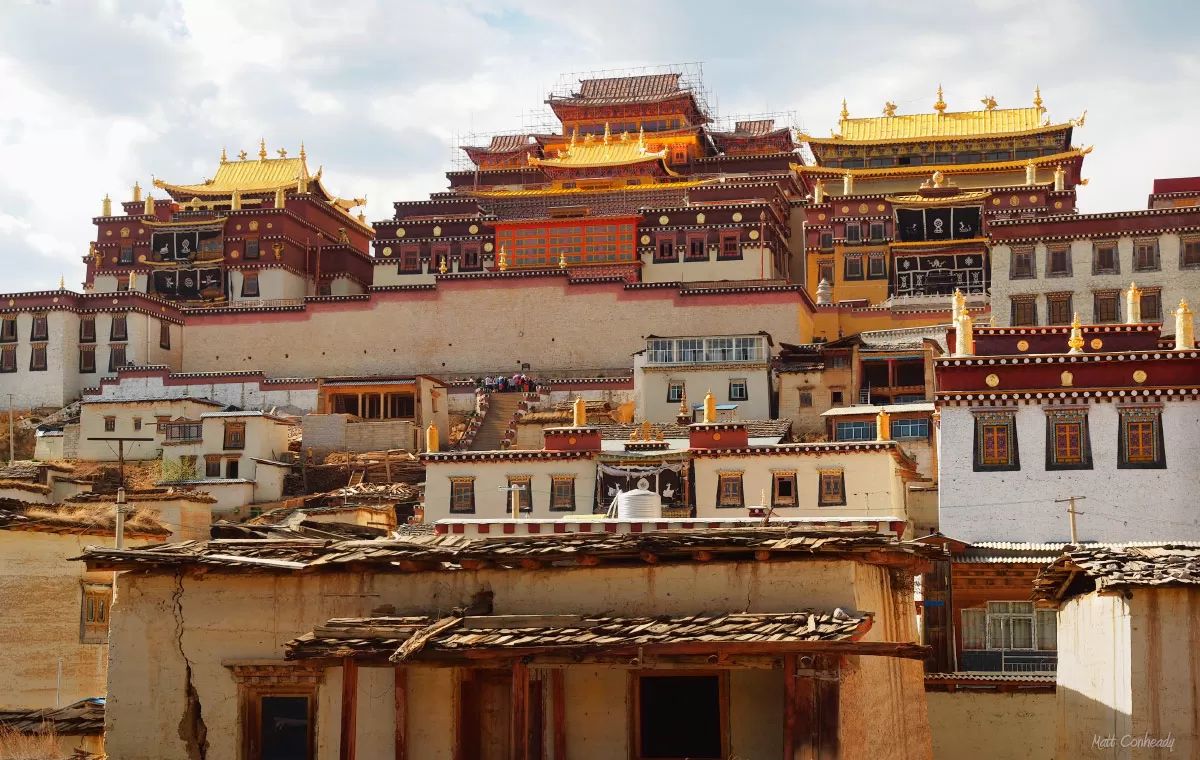
We purchase some fried potatoes from a street vendor outside of the monastery




Lamuyangcuo Lake. Each hill in the area is topped with a shrine.




Light is getting low… hurry to into the monastery through this open side entrance.





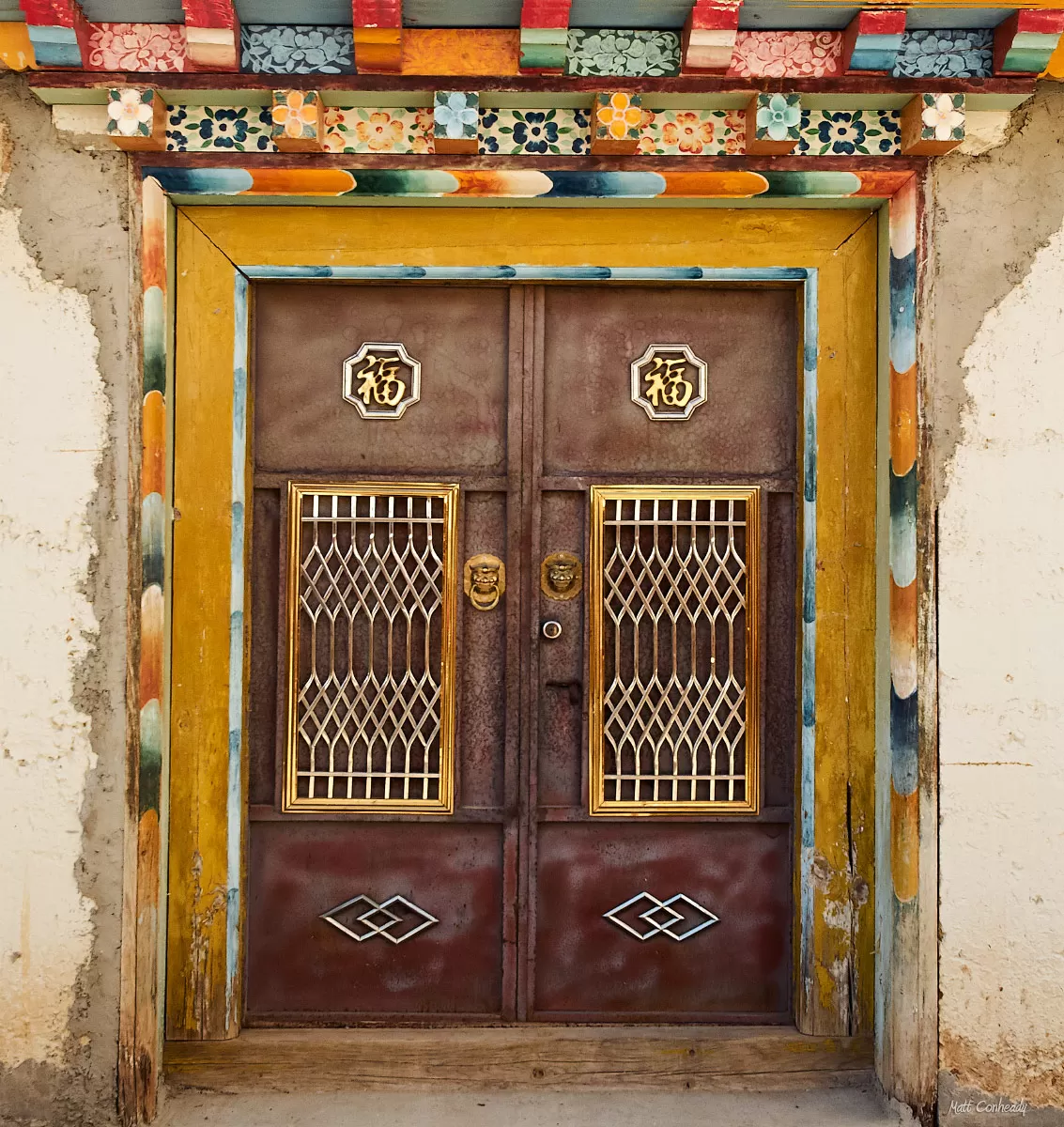

Entering one of the temples. I took no photos inside as it is disrespectful. To enter, males must step over the foot-high threshold left foot first, careful not to touch the wood. Females step right foot first. No hats, no photography, no commerce.
The interiors of the temples are some of the most elaborately decorated structures I have ever seen. The walls and pillars are painted with bold and bright colors, day-glow accents and gold trim. Giant bronze Buddhas, Bodhisattvas, or Vajrayanas tower over everything else, and they are adorned with gifts of fruit, money, bottled beverages, and trinkets. A monk is usually at the base of the statue, reading scripture and available to talk with any worshipers. Visitors should walk in a clockwise direction, and a tunnel under each statue allows them to circomvent each room. Photos, statues, paintings, and word commemorate other deities, monks past, and Lamas. Everything is colorful, decorated and meaningful. It’s sensory-overload. If one wall isn’t stacked with statues, its walls are covered with deity-filled murals (Tibetan Buddhism has hundreds of deities). Money is stuffed into every crack, set on every surface, and offered on platters to the deity or dead who best symbolized what the worshiper needs, wants, or has. The scent of potala incense is calming, and the chanting of monks, either in the temple or from some distance away, gives me a sense I am out of place, yet safe and at peace. I could easily spend hours in each temple, viewing the art, observing the details, (and if I could read Tibetan or Chinese) learning a bit about the people honored there.
If I could photograph inside the temples, I’d plan a trip based on it. For now, the experience is all I needed.


Some homes within the monastery are simple, others are elaborately decorated.

Some hand carved and panted doors were ruined by the construction.





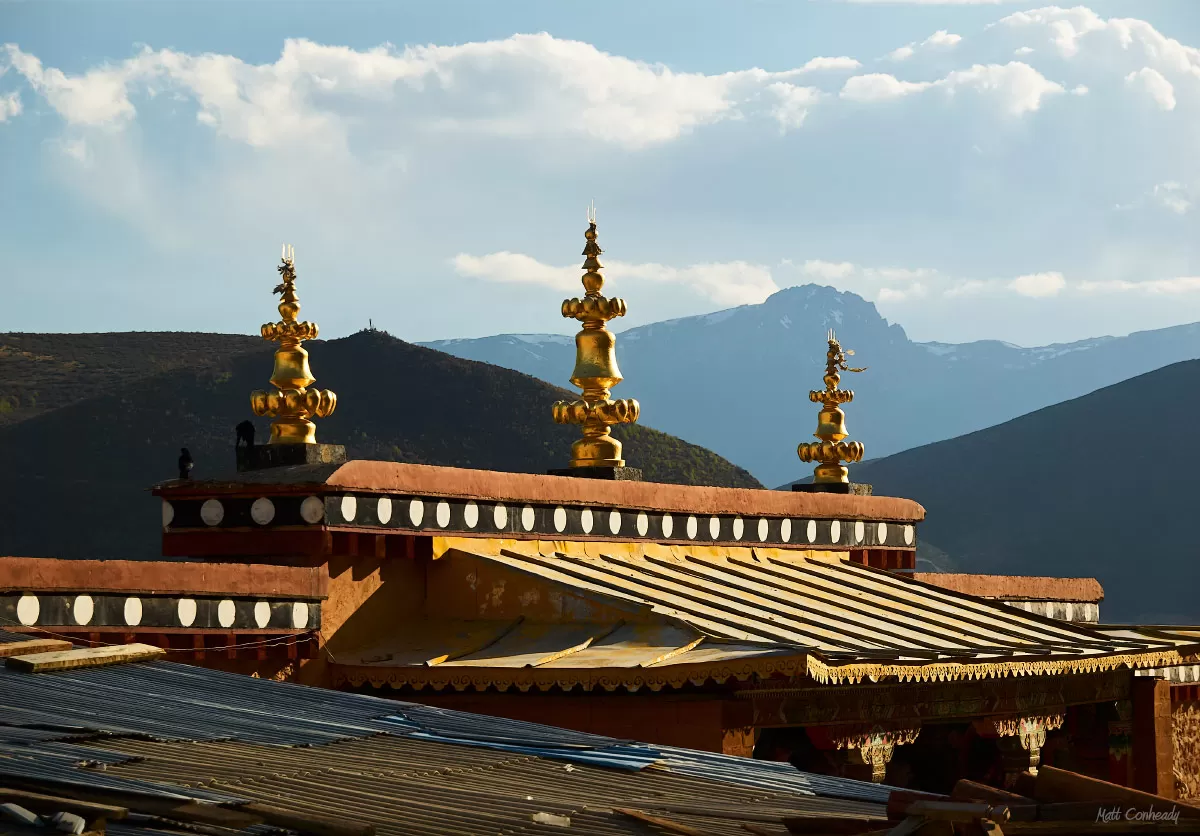


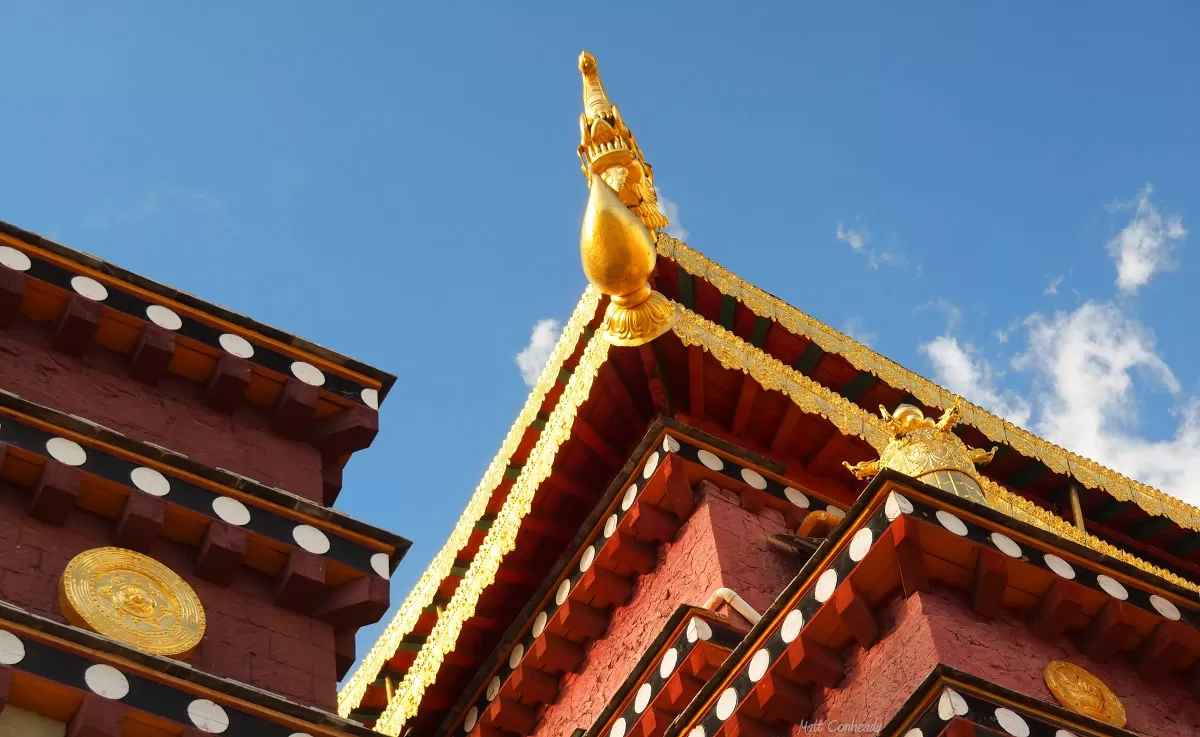






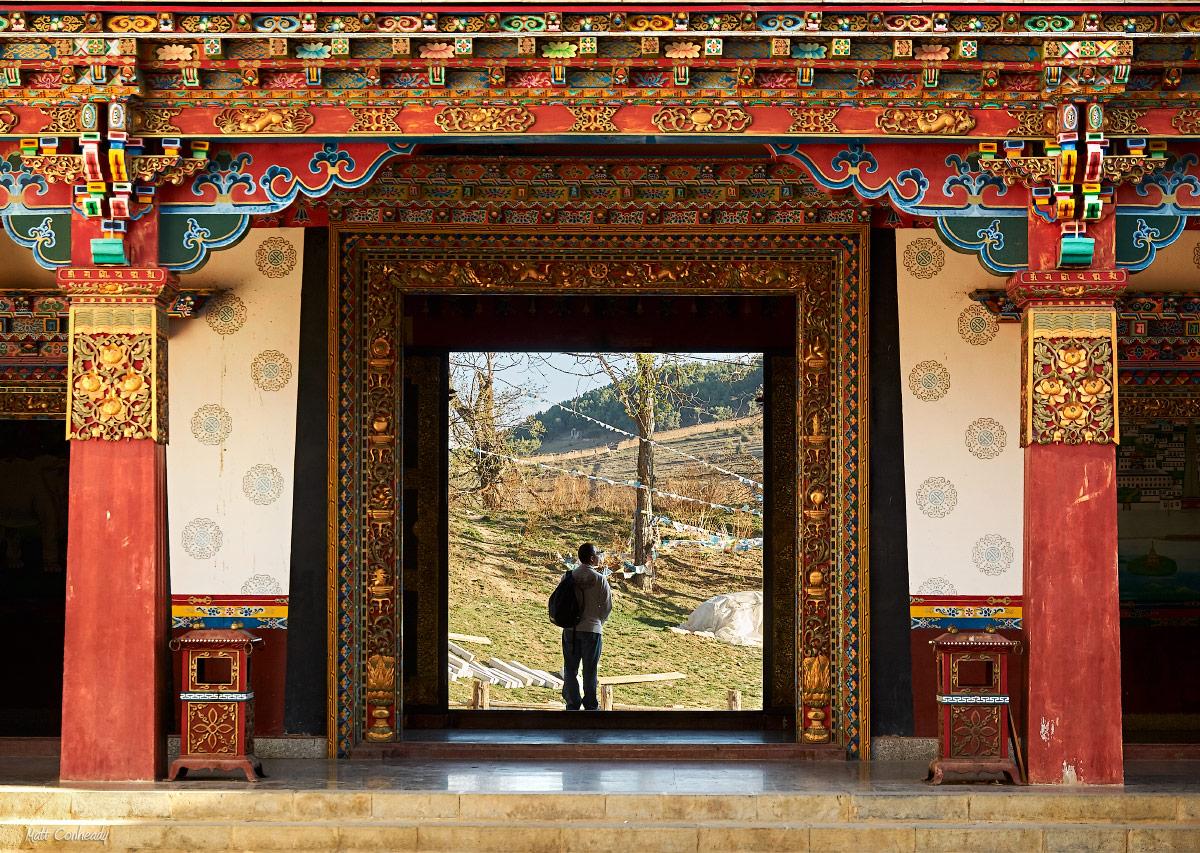




Write a Reply or Comment